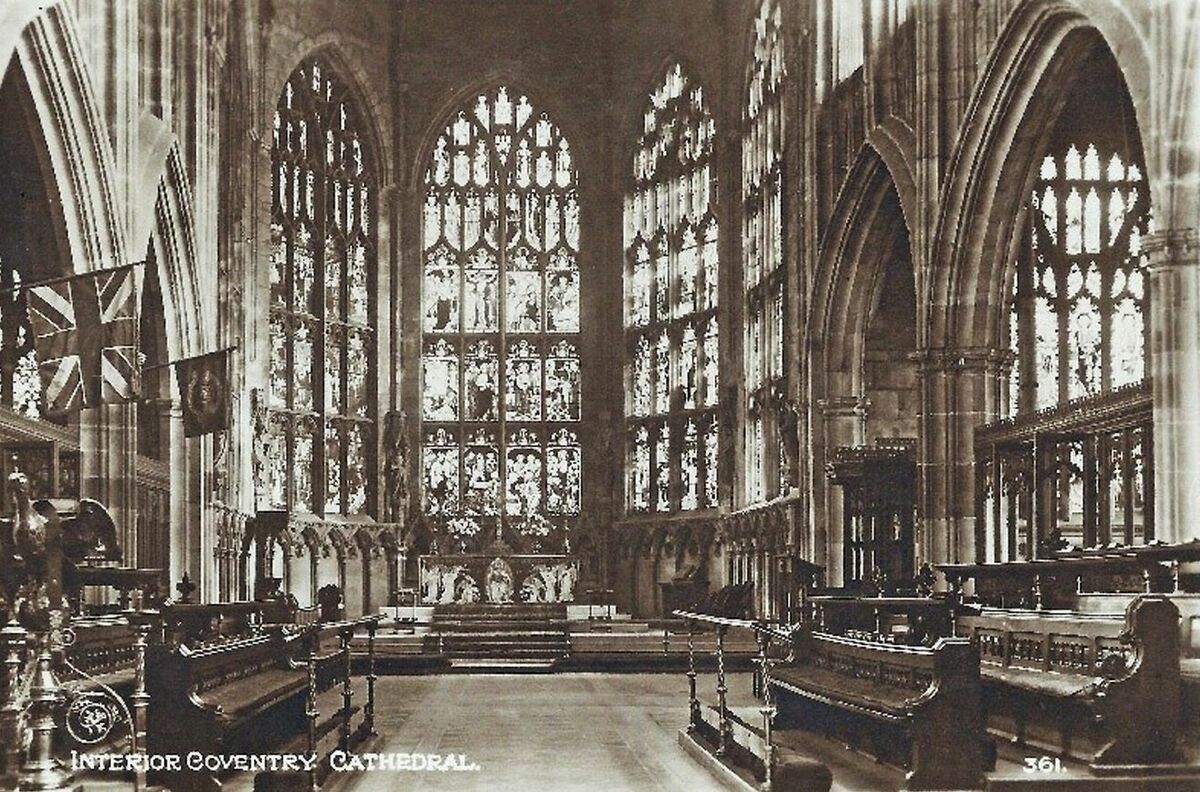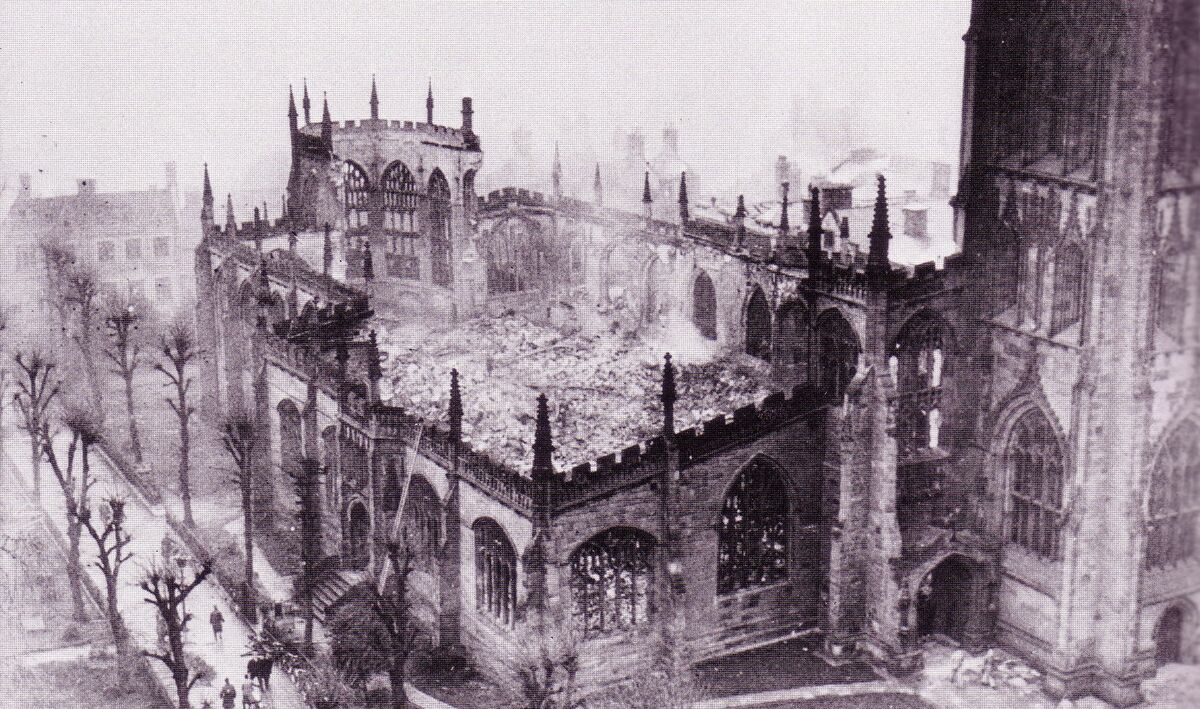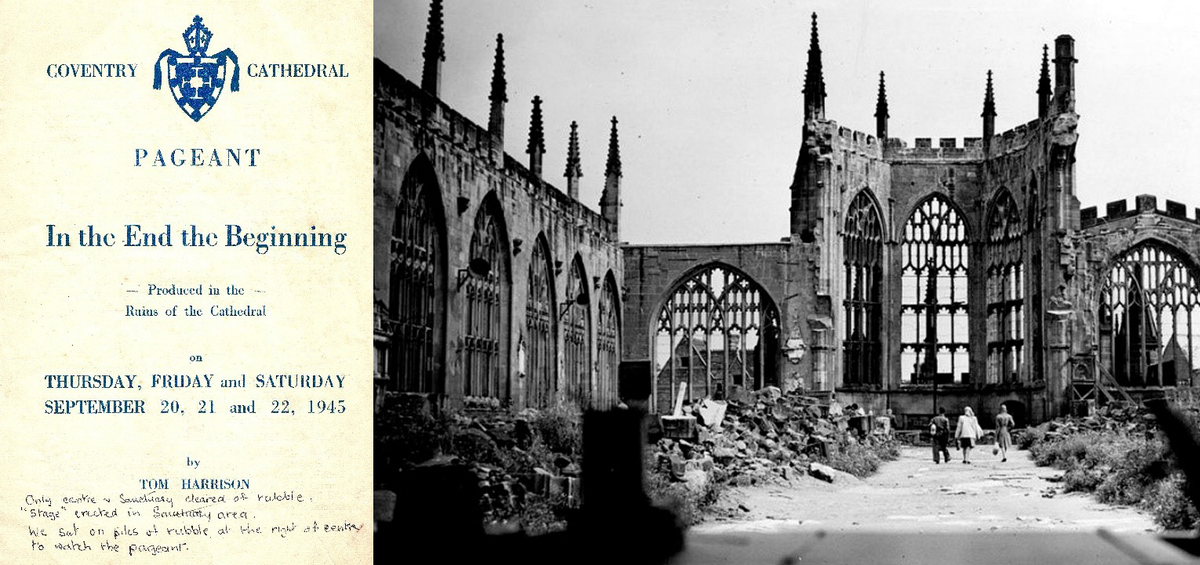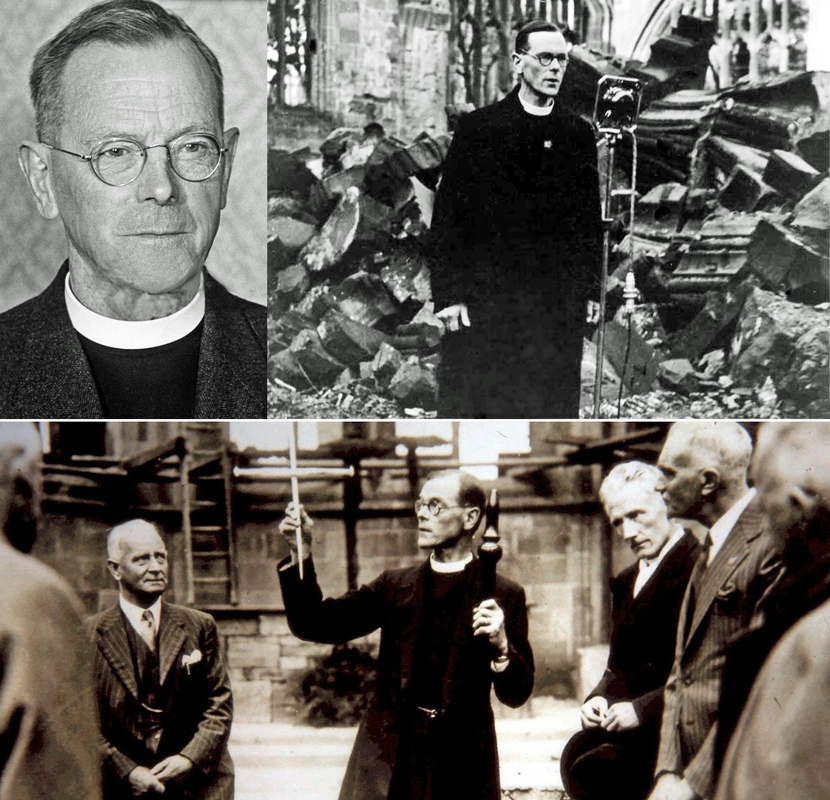In the beginning
(The following article is based upon the writings of Provost R T Howard)
The association of the Friends of Coventry Cathedral was launched at the summer Coventry Diocesan Conference on 8th May 1934.
The founding steps were taken by Provost Howard who had been inspired by the earlier founding and success of Canterbury Cathedral Friends.
Provost Howard gathered together members of the Cathedral congregation who all appreciated that whilst the Parish Church of St Michael had been one of the largest and most beautiful parish churches in the country, it now needed a good deal of costly work to be undertaken in order to make it fully worthy of its status as a cathedral.
History had been kind to the supporters of St Michael’s Church. In 1869 George Gilbert Scott, the leading architect of that period, had reported the whole church to be in a condition of lamentable decay. In the 1880s the sum of £40,000 was collected for the restoration of the nave and for the complete re-facing of the tower – a work executed so thoroughly that for many years following there was little need for great annual expenditure on repairs.
"To bind together all those who love Coventry Cathedral,
to bring others to appreciate and enjoy it,
to preserve it for posterity
with its beauties unimpaired and enriched"
– these were the declared objects of those first members of the Friends. The Friends Association grew rapidly and within a year there were some 400 members drawn from across the diocese.
The years that followed can be conveniently divided into three periods.

1. Before WWII
During its first six years the Friends carried out two main groups of work.
-
The sanctuary of the Cathedral was restored and equipped with new oak furnishings and ornaments. The change was remarkable. The east end took on a look of spaciousness and dignity that belongs peculiarly to a cathedral. The quiet beauty of the sanctuary as we now know it in the Ruins owes much to what was done at that time.
Bishop Mervyn Haigh preached at the service to mark the opening and unveiling of the restoration. He made two important points that are as valid today as then:
"The impulse to reduce disorder to order should always and everywhere seem to a Christian a profoundly important activity. If God wills that more beauty should attend and bless our homes, our towns, our gardens, our workshops and our countryside, then surely in the place where we meet expressly to worship Him, to claim His coming and His presence in Christ Jesus, harmony and order and beauty should especially be as far as possible around us....
"It is possible to be so much absorbed in beauty for its own sake as to forget the living God, of whose glory all beauty is a gleam. It is possible in a beautiful church to be distracted by its very beauty from giving real attention to what is being said or done within it and so to hinder that special and unique kind of approach which God makes to us, whenever His word is preached, His sacraments celebrated, and His Holy Name is invoked. We want Him to help us always to think of this church not chiefly as an object of our admiration, but rather as an offering and witness to His glory as Creator and to His yet greater glory as Redeemer."
Two Festivals of the Arts were organised by the Friends of Coventry Cathedral and they were held in 1936 and 1938.
The model followed was the Three Choirs' Festival of Hereford, Gloucester and Worcester Cathedrals. The Coventry Festivals received the generous help of the BBC Symphony Orchestra conducted by Sir Adrian Boult.
They included organ recitals and symphony concerts — one of them in the open air outside the west tower. 1,400 children came to the Cathedral for a Children's Festival. Plays were acted in the Opera House: T S Eliot's Murder in the Cathedral by the Coventry Repertory Company in 1936, and Gilbert Murray's Andromache by a mixed professional and amateur cast in 1939.
These events made classical music available to the citizens of Coventry, and were the first great contribution of the Cathedral to the arts.

2 The War Years (1939-1945)
"Coventry Cathedral was engraved by fire into the history of the world on the night of November the fourteenth in the year of our Lord nineteen hundred and forty. The bitter agony of all Friends of the Cathedral is too sacred to record."
These were the opening words of the first Friends’ newsletter following the destruction.
Under the circumstances there was little the Friends could do for their ruined Cathedral, but what could be done, they did. At their expense the south porch was established as the Chapel of the Resurrection (now named the Bishop Haigh Memorial Chapel) for private prayer and daily services.
But the greatest work undertaken by the Friends was to keep alight and continually fan into flame the hope of rebuilding the Cathedral after the war.

3 After the War
One month after the final declaration of victory, a Pageant was staged in the Cathedral Ruins by the Friends and it was seen by over 5,000 people on three September nights.
Episodes in the history of St Michael’s Church were presented by local amateur dramatic societies on a great stage built right across the ruined east end. It was produced by Tom Harrison, Regional Officer of the Council for the Encouragement of Music and the Arts.
The Coventry Cathedral Reconstruction Committee became the active body responsible for everything to do with the Cathedral rebuilding. The Friends gathered together their funds in order to make a substantial contribution to a particular part of Basil Spence’s new building, and in time the Friends provided the furnishings in the Lady Chapel.
While the new building was being constructed the Friends funded the cost of the boards that announced the Hallowing Places in the Ruins. They also provided for the Provost a new cope designed and made by the Royal School of Needlework.
On the 25th May 1962 the new Cathedral Church of St Michael, Coventry was consecrated by Bishop Cuthbert Bardsley in the presence of Her Majesty Queen Elizabeth II.
The work of the Friends in support of the Cathedral’s ministry and buildings continues to date.

Additional Information
Richard Thomas Howard was Provost of Coventry and served Coventry Cathedral from 1933 to 1958. He was one of the four Cathedral firefighters on duty that night in 1940 when the Cathedral was bombed. Six weeks later in the BBC Christmas Day radio broadcast from the Cathedral ruins his address included the following words that were the foundation of the Cathedral’s ministry of reconciliation that continues to this day:
"What we want to tell the world is this: that with Christ born again in our hearts today, we are trying, hard as it may be, to banish all thoughts of revenge; we are bracing ourselves to finish the tremendous job of saving the world from tyranny and cruelty; we are going to try to make a kinder, simpler — a more Christ-like sort of world in the days beyond this strife."
Provost Howard’s ashes lie in the Cathedral Ruins alongside the altar that is built of stones that fell during the Coventry Blitz when the roof collapsed.



